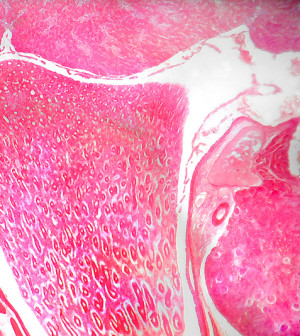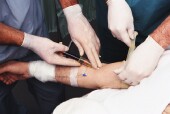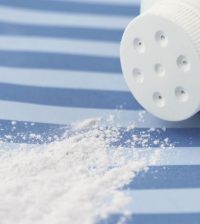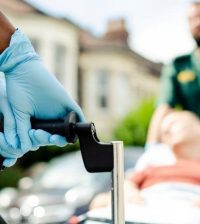- Could You Spot the Silent Symptoms of Stress?
- Gas Stoves Could Leave Your Lungs Vulnerable to Nitrogen Dioxide
- Key Therapy Equally Effective for Women, Men With Narrowed Leg Arteries
- Doctors Describe Texas Dairy Farm Worker’s Case of Bird Flu
- Does Preschool Boost Kids’ Long-Term Academic Success? Study Finds Mixed Results
- AI Might Spot Rare Diseases in Patients Years Earlier
- An Orangutan Healed Himself With Medicinal Plant
- Quit-Smoking Meds Not Working for You? Try Upping the Dose
- Fewer Americans Are Suffering Most Dangerous Form of Heart Attack
- Even Skipping Meat for One Meal Helps Liver Disease Patients
New Technique Protects Tissue Transplant From Rejection: Study


A new technique for delivering anti-rejection drugs directly to the site of a tissue graft transplant is effective, lasts for months and is safer than drugs that suppress the entire immune system, a new study indicates.
After a patient receives a tissue graft transplant — typically on the hand, arm, leg or face — they start taking drugs to prevent their immune system from rejecting and attacking the new tissue. However, this approach can be toxic and leave patients vulnerable to infection.
The new approach delivers immunosuppressant drugs directly to the site of the tissue graft transplant, and only when they’re needed. A hydrogel (jello-like) material is loaded with an immunosuppressant drug called tacrolimus, and this combination is injected under the skin after transplant surgery.
The hydrogel remains inactive until it detects an inflammation/immune response at the transplant site. It then delivers the immunosuppressant drug at the transplant site for months, according to the study published online Aug. 13 in the journal Science Translational Medicine.
“This new approach to delivering immunosuppressant therapy suggests that local delivery of the drug to the grafted tissue has benefits in reducing toxicity, as well as markedly improving therapeutic outcomes, and may lead to a paradigm shift in clinical immunosuppressive therapy in transplant surgery,” study co-corresponding author and hydrogel co-developer Jeff Karp, of the division of biomedical engineering at Brigham and Women’s Hospital in Boston, said in a hospital news release.
The hydrogel may prove useful in other areas of medicine, according to Karp.
“This safe, controlled-release platform approach functions for over three months from a single injection, and that has broad implications,” he said. “Nearly every disease has an inflammatory component. Thus, we believe the materials we have developed could be used for localized treatment of multiple inflammatory diseases.”
Karp has a financial interest in a company that is developing hydrogels for skin applications, the news release noted.
More information
The U.S. National Library of Medicine has more about transplant rejection.
Source: HealthDay
Copyright © 2024 HealthDay. All rights reserved.










